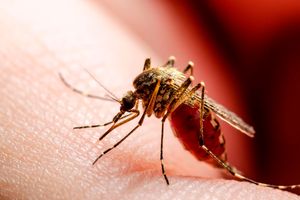Concerns grow as malaria drug resistance found among children

Artemisinin-based combination therapies (ACTs) are the first-line treatment for malaria recommended by the World Health Organization
What you need to know:
- In Kenya, pregnant women and children under the age of five are at the highest risk of contracting malaria.
A new study has revealed alarming evidence of African children with severe malaria beginning to show partial resistance to the world’s most effective malaria drug—artemisinin.
This discovery from Uganda provides the first evidence to date that resistance to a lifesaving malaria drug may be emerging in the group of patients that accounts for most of the world’s malaria deaths - young African children suffering from serious infections.
The study, presented last week at the Annual Meeting of the American Society of Tropical Medicine and Hygiene and published in the Journal of the American Medical Association, documented partial resistance to artemisinin in 11 out of 100 children ages six months to 12 years, who were being treated for “complicated” malaria - malaria with signs of severe disease caused by Plasmodium falciparum parasite.Complicated malaria also refers to cases where the disease poses a risk of life-threatening complications such as severe anaemia or cerebral malaria, a condition that affects the brain.
Additionally, 10 patients who were initially considered cured experienced a recurrence of malaria within 28 days, caused by the same strain as their original infection, indicating that the initial treatment failed to completely eliminate the infecting parasites.
“This is the first study from Africa to demonstrate that children with severe malaria are showing signs of at least partial resistance to artemisinin,” said Dr Chandy John, director of the Indiana University School of Medicine’s Ryan White Center for Infectious Diseases and Global Health, in the study co-authored by Ruth Namazzi and Robert Opoka from Makerere University in Kampala, Uganda, Ryan Henrici from the University of Pennsylvania, and Colin Sutherland from the London School of Hygiene & Tropical Medicine.
“It’s also the first study showing a high rate of African children with severe malaria experiencing a subsequent malaria episode with the same strain within 28 days of standard treatment with artesunate, a derivative of artemisinin, and an artemisinin combination therapy (ACT),” added John.
This development could have far-reaching consequences for public health in Africa as it marks the first time such resistance has been confirmed on the continent in children, raising concerns about the future of malaria treatment in regions most affected by the disease.
Artemisinin therapies, introduced about 20 years ago, revolutionised the global fight against malaria with their ability to rapidly cure infections, especially as malaria parasites had developed resistance to other drugs.
However, concerns about artemisinin resistance have been growing. In 2008, partial resistance was first reported in Cambodia, and by 2013, cases of complete drug failure were documented in some patients. Recent evidence suggests that resistance has now spread from Southeast Asia into East Africa.
This development is particularly alarming for Africa, where malaria has its greatest impact. The continent accounts for 95 per cent of the 608,000 global malaria deaths each year, with children under five making up the majority of those fatalities. The potential loss of artemisinin’s efficacy would pose a dire threat to African children, who are already the most vulnerable to this disease, say experts.
Although all the children in the study eventually recovered, 10 were infected with malaria parasites carrying genetic mutations associated with artemisinin resistance in Southeast Asia. While these mutations have been documented in Africa in less severe malaria cases, this study marks the first time they have been observed in parasites causing complicated malaria in hospitalised African children.
The Ugandan children in the study were treated with the gold standard for managing complicated malaria infections: an intravenous infusion of artesunate, followed by oral therapy with an Artemisinin-based Combination Therapy (ACT) that pairs artemether, another artemisinin derivative, with the malaria drug lumefantrine.
According to the study, the relatively high number of recurrent cases raises concerns about a potential decline in lumefantrine’s efficacy. This drug is paired with artemether in ACTs to make it more difficult for parasites to develop resistance to artemisinin. Additionally, lumefantrine remains in the body longer than artemether, allowing it to target any parasites that the shorter-acting artemisinin fails to eliminate.
John explained that the study originated from ongoing research in Uganda examining the outcomes of children with severe malaria. Researchers shifted their focus to drug resistance after noticing that some children were slower to respond to the standard treatment—an infusion of artesunate followed by an oral ACT.
“The fact that we began observing signs of drug resistance before specifically looking for it is deeply concerning.
“What surprised us even more was that once we concentrated on resistance, we found patients experiencing recurrences after initially appearing to be cured.”
In Kenya, pregnant women and children under the age of five are at the highest risk of contracting malaria. Malaria accounts for 13 to 15 per cent of outpatient visits, with about 70 per cent of the population at risk. The Plasmodium falciparum parasite causes 96 to 99 per cent of infections.





